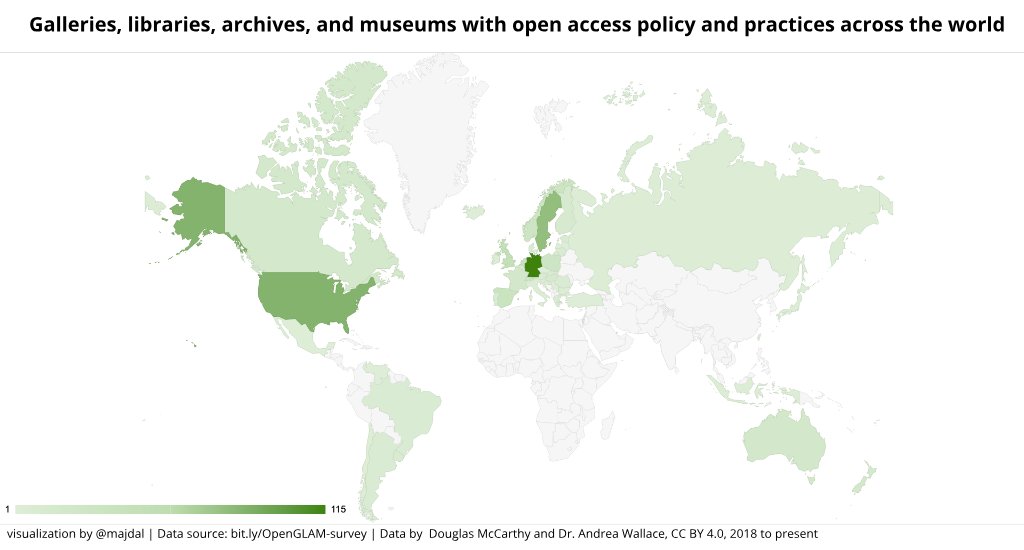A moment of reflection of for the #OpenGLAM community: I took the data collected by @CultureDoug & @AndeeWallace and visualized it on a map. A pattern that we already knew becomes very clear. The concept of openness makes practical sense in some parts of the world, but not others
There are some caveats: the data reflects the institutions that the survey reached. There are definitely GLAM institutions with open policies that we don& #39;t know of.
Also, a choropleth map doesn& #39;t reflect the population density, or population prosperity, so read this map with care.
Don& #39;t forget that collections in GLAM institutions in Europe especially are often looted from places they colonized earlier. Don& #39;t forget that doing open doesn& #39;t equal repatriation (but it& #39;s often a step in the right direction).
So our task becomes, how do we actively assist those institutions that we couldn& #39;t reach, in order to connect to the global network? What does mutual learning look like between, say the National Library of Lebanon, and the British Library?
As always, don& #39;t forget to follow @OpenGLAM and read the texts on the blog: https://medium.com/open-glam ">https://medium.com/open-glam...

 Read on Twitter
Read on Twitter


